It can be difficult.
Trying to eat fresh and healthy vegetables that is.
You get your vegetables from the store but you’re worried about what goes into them. Maybe they use harmful pesticides, maybe they don’t have sufficient nutrients, or maybe they are several weeks old.
You don’t want to get sick because someone else wants to make a quick buck. But what can you do about it?
There is a way to make sure that you eat fresh and healthy vegetables without spending a lot of time and effort.
And that is by planting your own vegetable garden that will give you the desired quality vegetables for years to come.
Plant a vegetable garden if you want to improve your life
There are several benefits to grow your own vegetables and some of them can improve your life.
Healthy vegetables mean a healthy you
You know eating vegetables is good for you but you still don’t.
Why?
Because they are boring and taste like crap. But that’s because you’re eating those store-bought ones that are bland and low in nutrients.
The problem with growing vegetables commercially is they are harvested before they get ripe. Then they are shipped for days till they reach a store near you.
This means two things: they have a weak taste and they have lost their nutrients.
When you grow your own vegetables, both of these problems don’t exist. You go out to your garden and pick fresh vegetables that are ripe for the harvest. This makes them taste awesome. And because they are fresh as you eat them they retain all of their nutrients.
And there’s something more that happens to you when you grow your own vegetables.
You will make sure you eat them.
Because you will spend a lot of time and energy on tiling, pruning, watering, and harvesting plants, you will be conscious that your effort does not go to waste.
And eating a ton of vegetables means you will protect yourself and your family from diseases such as heart disease, stroke, cancer, and diabetes.
We humans are supposed to spend some time working out in the sun which is exactly what gardening does. So you end up getting a big dose of vitamin D that is beneficial for your bones.
And all that lifting, pulling, dragging, bending work means you get a good workout for your muscles as well as the heart.
As you see planting your own vegetable garden is healthy for you physically. But it does a lot for your mental health as well.
Having a hobby like gardening is great to relieve some stress. As you’re busy working with plants in nature, you will feel a sense of peace, relaxation, and well-being.
Eat vegetables that taste awesome
You wonder why vegetables don’t taste good.
But it’s not the vegetables, it’s the way they have been grown and reach the stores.
Vegetables that are mass-produced need to be transported across the country to a store near you. But can they last that long?
There are some things you can do to ensure that. One is to harvest them before they get ripe so they turn ripe by the time they reach the stores. And two is to spray them with some chemical that ensures a better shelf-life till they reach you.
The problem with these methods is they affect the taste of the vegetables you get.
The other problem with mass-produced vegetables is no one cares about the quality and taste. The corporations are worried about their margins and will do anything they can to increase them. Even if it means you get a lower-quality product at a low price.
But when you grow your own vegetables, you are in control. You can take care of these problems. And once you take care of them you get to taste high-quality and delicious vegetables. You’ll wonder why you’ve been eating the store bought stuff all these years.
When you grow your own vegetables, you will ensure to give them the right love and care that they need. This means no harmful chemicals in the soil, water, and air.
The vegetables will grow naturally to their full potential will the highest level of taste.
And you’ll be picking those vegetables only when they are ready for harvest and you need to eat them. This adds to their taste level as well.
Eat a variety of vegetables you’ve never tasted
Variety is the spice of life.
But when it comes to vegetables you don’t get to taste a variety of them.
That’s because when they are grown commercially, it’s to make some money. And to make money your vegetables have to be cheap and have a long shelf-life.
The problem with doing that is these producers only grow a limited variety of vegetables because other ones would not be viable for them.
This means you are eating vegetables based on what they produce rather than what you should be eating.
When you grow your own vegetables, you are not bounded by these restrictions. You don’t have to worry about shelf-life or growing cheap versions. You can grow a variety of high-quality vegetables that you want.
Growing such vegetables will help you experience the difference in taste, texture, and nutrients that you get with such a variety.
Grow vegetables and lower your grocery bill
Everyone likes to save money.
And growing your own vegetables will help you save a ton of money over the long-term.
You should have seen the price of vegetables growing every year because of factors not under your control.
Maybe it’s the shortage in production, maybe the weather is bad, or maybe there is some disease going about destroying plants.
Whatever be the reason, you have to spend more money on buying your vegetables at the store.
Growing your own vegetables means you can avoid these problems and lower your grocery bill. You just have to spend money on plants for your vegetable garden. You can go even cheaper if you spend money buying seeds and growing plants from them.
A single plant can give you a big harvest of vegetables for many years to come.
And you’ll end up saving money on gas as well because you don’t need to go to the store for your vegetables. Just walk out to your yard and you can pick fresh vegetables ready for harvest.
You can eat vegetables that are safe and healthy
You can get sick eating mass-produced vegetables.
You must have heard about vegetables being recalled because they were infected with bacteria like E. Coli.
That’s what can happen when proper care is not taken when growing vegetables or while transporting them.
But when you grow your own vegetables, things get a lot different.
You give the loving care that the vegetables need and make sure they grow well without any disease. Picking them straight out of your garden means you are assured there is no chance of problems encountered during transportation.
In addition, mass-produced vegetables can contain harmful chemicals used with pesticides and fertilizers. And you can never be sure of what has been used and whether you agree with them.
But when you grow your own vegetables, you know what pesticides and fertilizers you use. And you can make sure to use healthy, organic ones to keep them free from harmful chemicals.
Become a hero that protects the environment
The planet needs to be saved.
And you can do your part by growing your own vegetables.
The problem with mass-produced vegetables is that it takes a lot of resources to ship them across the country and into a store near you.
When you grow your own vegetables, you end up saving a lot of gas that would be used for this purpose. You also don’t need to travel to the store often and save even more gas used for transportation.
Commercial vegetables are grown with a ton of chemical pesticides and fertilizers used to increase the yield, prevent disease, and improve the shelf-life. But they can be harmful to us humans as well as the environment in the long run.
By making use of organic, chemical-free pesticides and fertilizers, you can prevent polluting the air, water, and soil.
When you create your own fertilizer using the method of composting you help recycle a lot of waste. This is because you can use left-over food, dry leaves, and dead plants to create the compost. And keep the cycle of nature going without any waste.
Having your own vegetable garden means you create an ecosystem that takes care of the animals, birds, and insects that will thrive in the garden. This will help improve the fertility of the soil and the growth of the vegetables.
Teach your children to respect nature
Children are the future of the world.
But today’s children don’t know where their food comes from.
Some children may think it comes from the nearby McDonald’s while others may think we get it from the grocery store.
But we need to make them realize the importance of how vegetables are grown and the effort and resources that go into it.
So planting your own vegetable garden gives you an opportunity to do just that. It will help teach your children the value of growing vegetables and the knowledge of growing their own food.
They will enjoy the process of growing their own vegetables in the garden especially those they enjoy.
And it will give you a chance to spend quality time with them as you work together on gardening the vegetables.
You build a sense of community
Gardening used to be a common activity of every household.
But we lost this ability once we started growing mass-produced food that made it convenient to buy at a store.
The drawback was that we forget how to grow our own food and became dependent on corporations for those. Letting others decide on the foods that we eat has made us unhealthy and ignorant of essential gardening skills.
But that can change once you have your own garden of vegetables. You can learn some good gardening skills that will ensure you never go hungry again as you keep growing your own vegetables.
And when you grow a surplus of vegetables, you can share it with your family, friends, and neighbors. This will help you build a stronger sense of community in your neighborhood.
You could even build a community garden where everyone in the community shares the gardening work and reaps the benefits of growing their own vegetables.
Having a vegetable garden will give your neighbors and passersby an excuse to strike up a conversation starting from how wonderful your garden looks and what you’ve been doing to achieve this.
Never waste food again
It’s a sad thing to waste food.
Especially when many parts of the world go without food for days.
But food wastage is a reality when it comes to mass-produced vegetables. When you can buy food in bulk for cheap, it tends to lose value. You end up buying a surplus even if you don’t need it and it gets tossed in the trash ending up in the landfill.
But when you grow your own vegetables, you work hard on them. Every day you will check up on them, feed them, and protect them.
When you work hard on something, you want to see that the effort does not go to waste. And the same will hold true for the vegetables you grow in your garden. You will ensure that nothing you grow goes to waste.
You will only pick the vegetables that you need for your consumption and that are ready for the harvest. This will help prevent you from getting more vegetables than you actually need and reduce waste.
And even if you do produce a surplus of vegetables, you will make sure to give it to your friends, family, and neighbors instead of throwing them away. And they will appreciate your effort and the high-quality of your home-grown vegetables.
Even if you have some vegetables that were wasted because of disease you can recycle them as part of your compost which gives the best type of fertilizer for your plants.
Planning a garden that is best for you
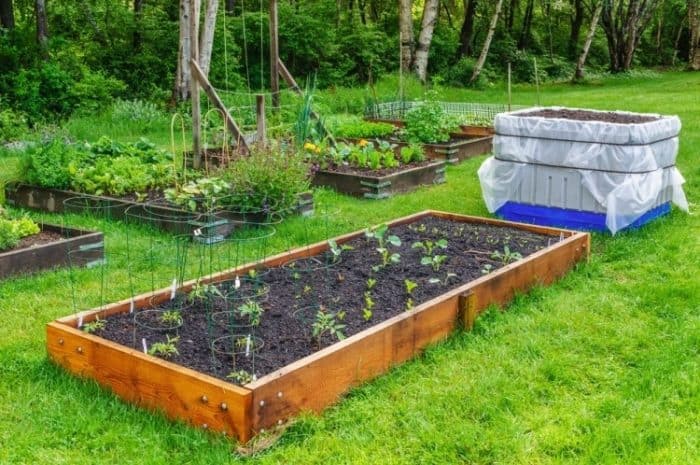
You want to plan the type of garden you want before you start planting. This will help you understand the layout you can use and the plants you can grow in the garden.
You can do this planning with a pen and paper or use a computer program. For a small vegetable garden, both the methods are fine, so use the one you are comfortable with. If you want a big garden then the computer program is much more efficient.
Determining how much space you need
The size of your garden will depend on the amount of space you can afford to have.
You may have a lot of space in your front or backyard that will be good to plant a big garden. Or you may be someone staying in an apartment and will need to make use of a limited space in the balcony.
So note down the amount of space you have for your gardening needs because it will determine the type and number of plants you can grow.
Even if you have a large front yard, the size of your garden should depend on the number of vegetables you want to grow. You don’t want to end up with having to manage and harvest a huge crop when you don’t have any need for it.
Deciding the amount of space for your garden will help you plan the plants you can grow without them having to compete for resources.
Pick the right spot for your garden
Once you have decided on the space you are going to give to your vegetable garden, you need to pick the right spot. Plants need some essential elements to grow well so your plan should include those.
Sun
Many plants especially summer ones need a lot of sun to grow. This can be anywhere from 6 to 8 hours of full sunlight.
So you need to pick the right spot in your yard or balcony that gets a good amount of sunlight. There should be no wall or fence that is obstructing the crucial light from the plants.
Plants that need a lower amount of sunlight can be grown in the shade of taller plants if needed. The idea is to plant tall plants like corn, beans at the north end of the garden, medium plants like tomatoes, cucumber in the center and the small plants like potatoes, beetroot at the south. This will make sure that the tall plants don’t block the sunlight from reaching the small plants.
Soil
Your plants will need rich, organic soil to get the best nutrients and give you a good harvest.
You might be lucky and have such soil in your backyard. But if not you need to plan the soil preparation.
You could create a raised bed and add good topsoil to it. Then mix in some good compost to enrich the soil and make it suitable for your vegetable plants.
Water
Plants need a good amount of water so you need to plan how you will water them.
For a large garden you may need to invest in a good sprinkler or irrigation system but for a small garden you just need to water the plants every few days.
What can help you is to plan the garden close to a water source as it will be convenient for you while watering the plants.
Which garden layout is the best for you?
The type of garden layout you use will depend on the space you have as well as the plants you want to grow.
In-ground garden
An in-ground garden means you use an area of the ground to plant your vegetables.
This is a traditional form of gardening where you grow the vegetables in a series of rows with a walkway between the rows.
The big walkway allows you to use machines for tiling the ground or removing weeds.
If you don’t have good existing soil in the ground, you can create a mound of potting soil and compost to create a kind of raised bed but without any wooden sides.
This will help give you the nutrient-rich organic soil for your in-ground garden while keeping the drainage good.
Raised-bed garden
Having a garden full of stones is not good for growing an in-ground vegetable garden.
But that problem can be solved using a raised bed garden where you create a bed of soil that is surrounded by a wooden frame.
The raised bed is filled with a mixture of potting soil and compost to give you a nutrient-rich soil for your vegetables.
This raised bed can either be made into a mound or a wooden frame that is filled with soil 6 to 8 inches in height.
The raised bed gardening is an intensive method of gardening because you can plant many vegetables in a small space. This helps you get a high-yield from a small patch of the garden.
This also means that weeds don’t get a chance to grow in the garden because most of the space is taken up by the vegetable plants.
Raised bed gardening will also help you plan your garden better and you can even mix other plants like flowering ones along with the vegetable plants. This helps attract friendly insects like bees that help with cross-pollination.
Container garden
If you’re someone who lives in an apartment you won’t have the luxury of growing vegetables in a backyard.
But don’t worry because you can still grow a good amount of vegetables by using container gardening.
As the name suggests, you will grow vegetables in containers that you can place in your balcony to give them a good amount of sunlight.
The advantage of container gardening in addition to using less space is that it is very portable and you can move the containers around. This is useful in winter where you can move the plants indoors and protect them from the harsh cold.
Vertical garden
If you’re short on space there is another method of growing vegetables known as vertical gardening. This means you can grow the plants vertically which helps you save space.
Vertical gardening can be used with the other types of gardening such as in-ground, raised bed, and container gardening.
You can make use of a wall, a trellis or containers like pots and encourage the plants to grow vertically by providing them support if required.
This helps you to save gardening, space, provide better air circulation to the plants, and prevent crawling insects to reach the plants.
How to prepare the best soil for your garden
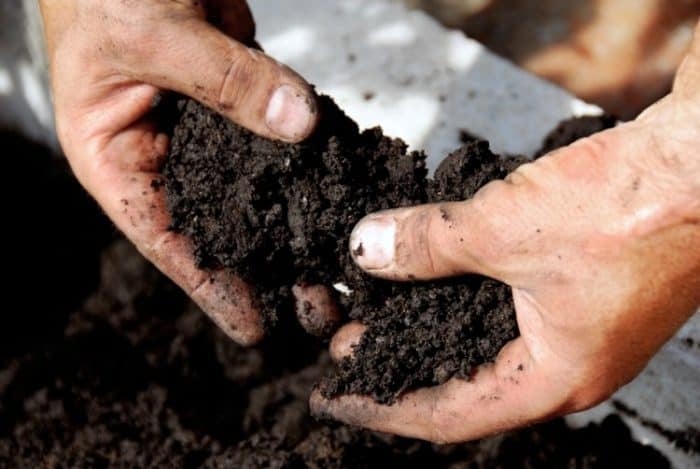
Soil preparation is one of the most important things you need to do before planting your vegetable garden.
A rich, organic soil will help your plants get the nutrients that they need. Such a soil will help retain enough moisture while draining away the excess.
Such soil is loose and fluffy which helps the air reach the roots of the plants. It also helps living organisms like earthworms, bacteria, and fungi to thrive and make the soil organically rich.
Keeping your soil organically rich will help you grow the best quality vegetables without the need for a lot of fertilizers and pesticides.
Determine the soil health
Before you can prepare the soil for your vegetable garden, you need to find out the health of your soil. Then you will know what nutrients are missing and add the right amendments to the soil.
Nutrients
The most important nutrients that good soil should contain are nitrogen, phosphorus, and potassium. They are also known as the primary or macronutrients that are required by the plants.
Nitrogen is the nutrient that helps the plants use sunlight for energy. It helps to grow the leaves and foliage of the vegetables. Vegetables like cabbage, lettuce, and squash need a good amount of nitrogen.
Phosphorus is required by all plants because it promotes good cell division as well as keeps the roots of the plants healthy.
Potassium is the nutrient that helps plants utilize sugar as food. It helps protect the plants from disease as well as extreme temperature changes.
To determine whether there are sufficient macronutrient levels in the soil you either need to send a sample to the Cooperative Extension Service that will conduct the test for a minimal fee. Or you can buy one of the cheap soil test kits and conduct your own soil test.
pH level
The pH level determines the acid or alkaline level of the soil. The scale ranges from 1.0 to 14.0 where 1.0 means the soil is most acidic and 14.0 means the soil is most alkaline.
The pH level of 7.0 is neutral. The range from 1.0 to 6.9 means the soil is acidic while the range from 7.1 to 14.0 means the soil is alkaline.
Most plants prefer to have soil that is slightly acidic falling in the pH range of 6.0 to 6.8.
The pH level of the soil can be tested by sending a sample of the soil to the Cooperative Extension Service who will perform the tests for a minimal fee. Or you can make use of a cheap soil test kit that will give the pH level. You can also use a digital pH soil meter to determine the pH level.
Texture
The soil needs to have the right texture before you go about planting the garden. It can have a texture that is a mix of sandy, silty, and clay soil.
Sandy soil texture means the grains of soil are big and gritty. Silty soil contains grains that are slippery when wet and powdery when dry. Clay soil contains grains that stack together like plates and sticky when it is wet.
The problem with sandy soil is that it does not retain moisture and organisms for good growth. Clay soil has the opposite problem where it becomes sticky and does not drain the water well. This suffocates the roots as well as useful organisms. Silty soil is quite fertile for growth but it does not drain the water well.
It’s easy to understand the composition of your soil by just holding it in your hands and judging the texture. It’s good to have the right mixture of sand, silt, and clay in your soil for the best plant growth.
How to improve soil health
The best way to improve soil health is to make it into a rich organic soil containing the nutrients and organisms needed for healthy growth.
Improving soil health can be a long process that takes several seasons before you get the best soil for your vegetable garden. So make sure that you start the process in fall season so that the soil is ready for planting in spring.
Use an organic fertilizer

Once you have tested the soil, you may find that the soil is lacking some of the nutrients like nitrogen, phosphorus or potassium.
Depending on which one, you can add a fertilizer to the soil to improve the nutrient levels. The fertilizer comes with the N-P-K mentioned on the bag. This is the Nitrogen-Phosphorus-Potassium levels as mentioned. So if the N-P-K mentioned is 5-5-5 it means that the bag contains 5% nitrogen, 5% phosphorus, and 5% potassium.
So if your soil is having a good amount of nitrogen and phosphorus but lacking in potassium you could use a fertilizer that has an N-P-K value of 2-2-10.
You can get chemical fertilizers and organic fertilizers but we recommend using organic ones. The chemical fertilizers will end up damaging your soil in the long run by killing microorganisms. The organic fertilizers take a while to start working but they will enrich your soil rather than harm it.
If you’re using organic fertilizer, be sure to use them in the fall so that they have improved the soil by spring when you want to plant your garden.
Use compost
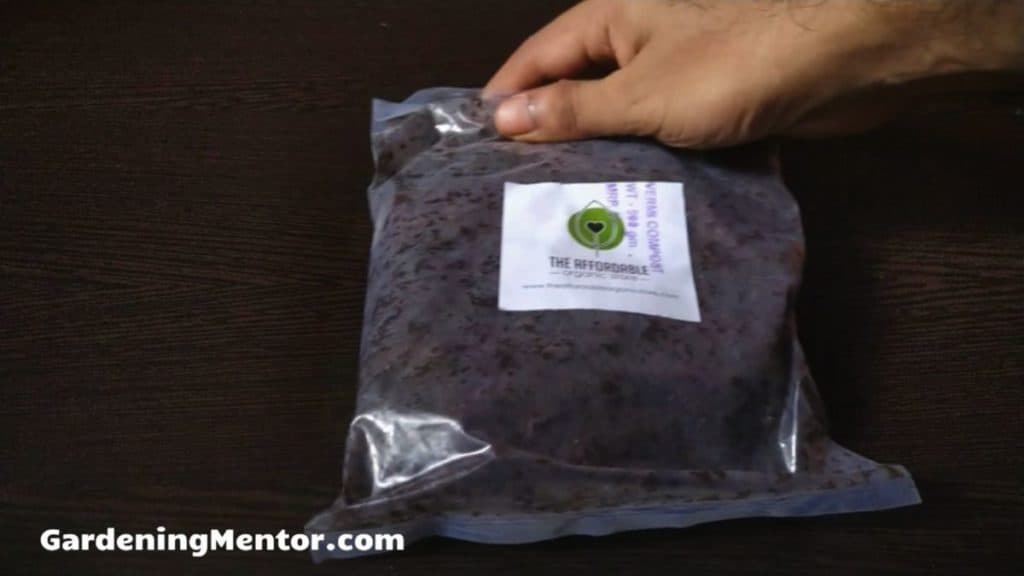
The best way to increase the nutrients of the soil is to make it rich with organic material using compost.
It’s easy to create your own compost using grass clippings, brown leaves, vegetable trimmings, and food waste. If not you can also buy organic compost by the bag or by the yard.
If you have the problem of rodents going through your compost, you can make use of the compost bins that are aesthetically pleasing in your garden and will keep animals and insects away from the compost.
The compost is rich with nutrients and microorganisms that feed on the compost. Both of these are essential for a healthy soil.
Use manure
You can improve the nutrients in the soil by adding manure to it as well. The manure can be animal manure or green manure made from plants.
If you use animal manure you need to ensure that it is matured so that the microorganisms are thriving in it. This also makes sure that any harmful bacteria has been eliminated and that there are no active weed seeds present in the manure.
You could also use green manure with a method such as cover crops. Here you plant some cover crops like rye or alfalfa during the fall season. This cover crop will protect the soil from the wind as well as insects and weeds.
Before the crops can start seeding, you need to till them into the soil using something like a rototiller. So the plants will start decomposing and enrich the soil with organic matter.
When you want to plant your vegetables in spring, your garden bed will already contain rich, nutrient soil as a result.
Use mulch
Mulching is a technique that has several benefits for the soil of your vegetable garden.
It protects the soil from extreme heat and extreme cold. It chokes up weeds and prevents air and light from reaching them.
If you use organic mulch like hay, straw, grass clippings, dried bark, they enrich the soil with organic matter as they decompose. You will need to replace the mulch every year when you use organic mulch.
Inorganic mulch like gravel, stone pellets, plastic pellets don’t need to be replaced every year and they provide the same benefits as organic mulch. However, they don’t have the soil enriching benefits that organic mulch has.
Improve pH levels
If you find that the soil in your garden is too acidic or alkaline you can change the pH levels based on the needs of your garden.
However, you need to know that it will take a couple of seasons before you will be able to do so as it is a slow process. And you will need to maintain it every year.
If your soil is too acidic and you want to increase the pH levels, you can use powdered limestone. It is best to use it in fall so that you get the desired pH level by spring.
For sandy soil, you will need to add 3-4 pounds of limestone per 100 feet to increase the pH level by one point. For silty soil, you will need 7-8 pounds of limestone per 100 feet, And for clay soil, you will need 8-10 pounds of limestone per 100 feet.
If your soil is too alkaline, you need to decrease the pH level. You can do this using sulfur, sawdust, or conifer needles.
To lower the pH level of sandy soil by one point, you will need 1 pound of sulfur per 100 feet. For silty soil, you will need 1.5-2 pounds of sulfur per 100 feet, and for clay soil you will need 2 pounds per 100 feet.
Improve the texture
The best way to improve the texture of the soil is to add a layer of rich, organic matter such as compost.
If the soil is sandy, you will need to mix in 3-4 inches of organic matter. For silty soil, you can add an inch of organic matter while for clay soil you will need to add about 2-3 inches.
This organic matter will get depleted every year and you will need to keep on adding more as a replacement. Though you will not need as much as the earlier year because the organic matter keeps enriching the soil and making it more and more fertile.
How to choose vegetables for your garden?
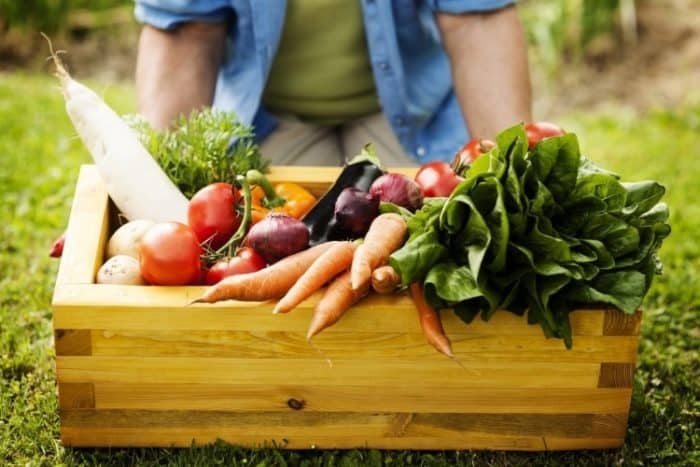
There are many things to consider when choosing which vegetables are best grown in your garden. However, we can keep things simple and think about the below before choosing the right vegetables.
Choose vegetables that match your garden conditions
As a beginner, you may consider vegetables that are easy to grow in your garden. Or maybe you want to grow herbs that grow in a partially lit corner of the garden.
Or you’re just happy growing vegetables in the brassica family such as cabbage, cauliflower, and broccoli.
Narrow down the list of vegetables you want to grow by choosing them based on the conditions of your garden.
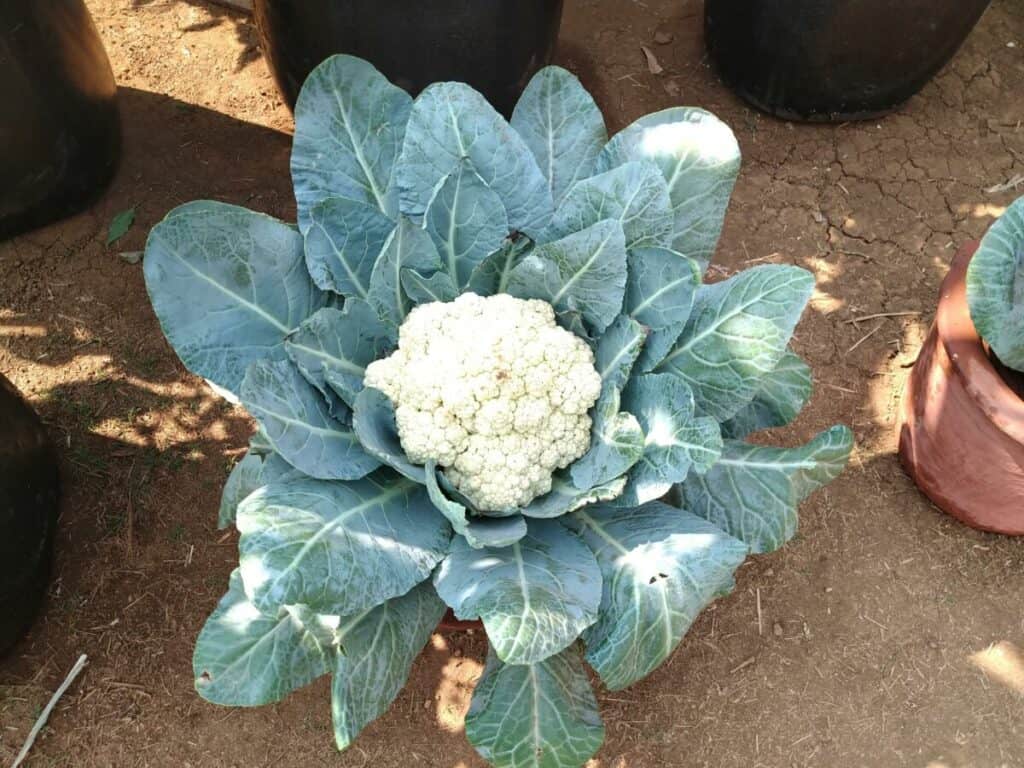
Choose vegetables based on the space you have
The space available in your garden will help you choose the type of vegetables you’re going to plant.
If you have a small garden you may be better off planting vegetables that give a good harvest with a small number of plants. You may also choose vegetables that are expensive if you buy them at the market.
If you have a large garden, you can plant several vegetables of your choice but you may consider those that require less maintenance. Then you don’t have to spend too much time and effort in your garden tending to these vegetables.
Choose vegetables that you enjoy eating
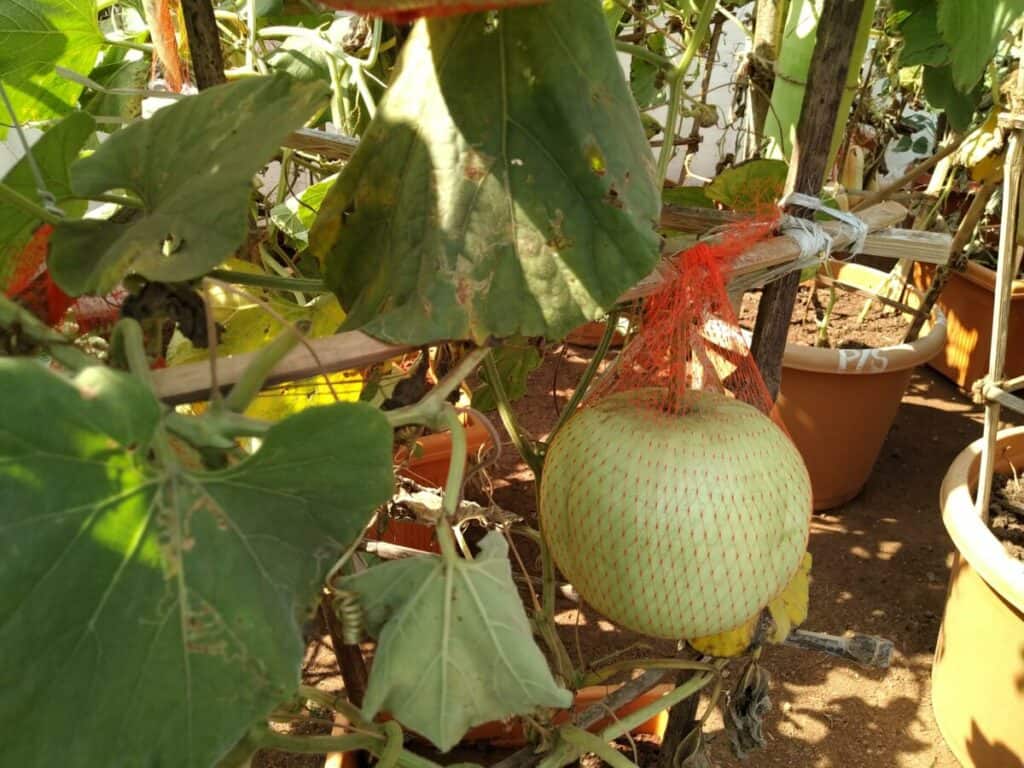
You always want to plant vegetables that you will enjoy harvesting and eating otherwise what’s the point.
If you’re fond of vegetables that grow in the summer such as tomatoes and cucumbers then plant them. If you like vegetables you can store longer such as potatoes and pumpkin then grow them.
Planting vegetables that you enjoy eating will make the gardening more fun and keep you motivated.
Some popular vegetables you can consider growing
Let’s take a look at some vegetables that many people grow in their vegetable garden because they are easy, fast, and don’t need a lot of maintenance.
Basil
Basil is a herb that is easy to grow in your garden. It is a plant that needs a warm climate to grow so you can plant it in summer.
You can grow a lot of basil in a small space and it gives a high-yield.
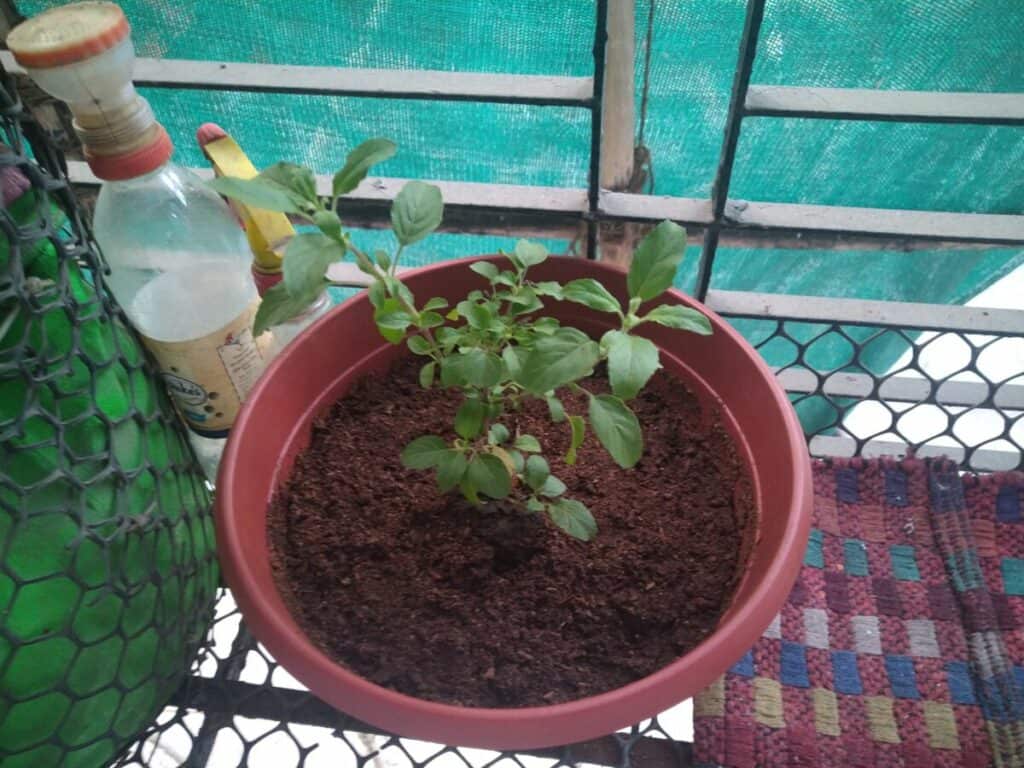
Beets
Beets are another vegetable that is quite easy to grow. They also grow pretty fast from seed to harvest.
The only thing you need to make sure is that the soil is crumbly and not full of clay so that the beets can grow in the soil.
Kale
Kale is an easy vegetable to grow a lot of in a very small space. They like to grow in cold weather like early winter and also early spring.
Cucumbers
Cucumbers are a vine plant that you can grow on a stick or trellis in your garden. They are a vegetable that provides a very high-yield so you don’t need to plant many of them.
Green beans

An extremely easy to grow plant that is available in bush or vine variety. They require a warm climate to grow but they grow extremely fast.
Lettuce
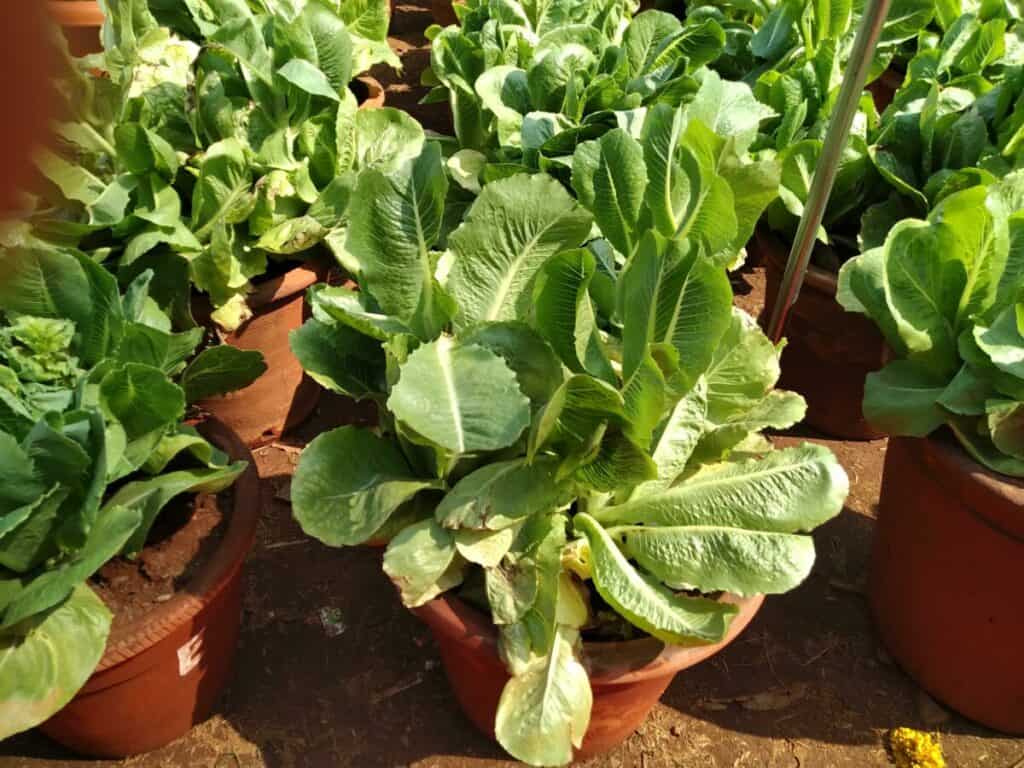
Lettuce is another plant that you won’t have problems growing. You do need to grow them when the climate is cold. You could grow them in warmer temperatures if you can cover them and keep them cool.
Radish
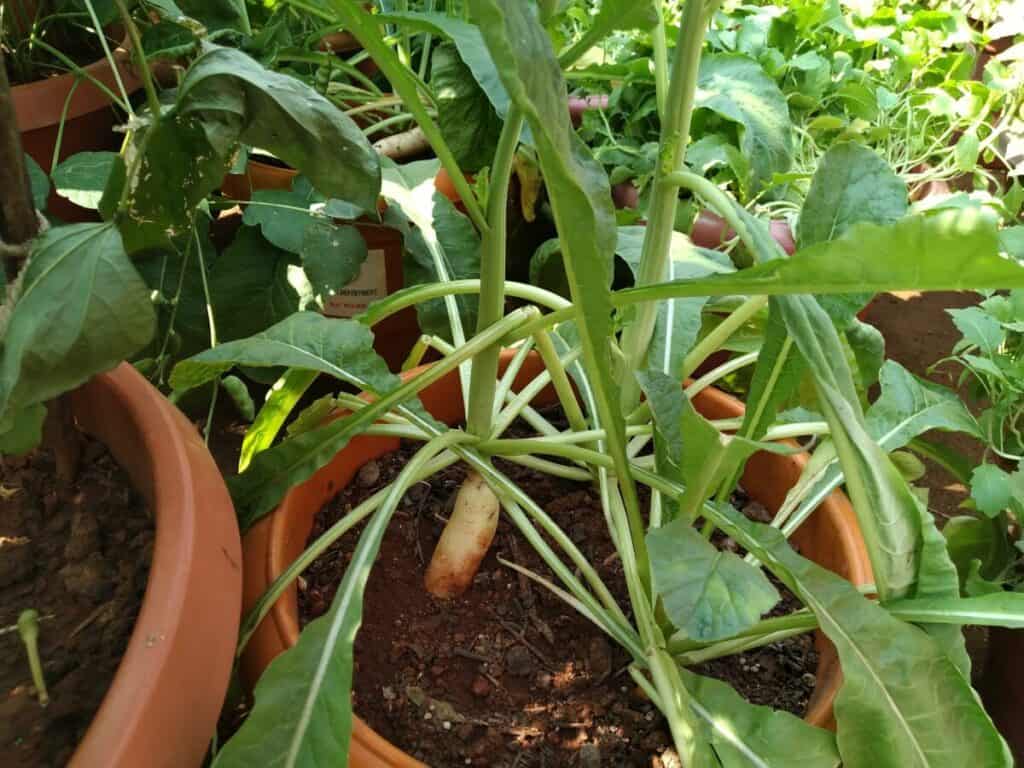
Radish is one of the fastest growing vegetable from seed to harvest. If you’re a beginner and want to get your first harvest quickly grow some radishes.
Spinach
Another plant that needs cold weather, it’s an easy to grow plant. And once you grow it, you can keep harvesting the leaves for a long time.

Tomatoes
One of the easiest plants to grow, you can choose from a variety of tomatoes to grow. The only thing you should consider when growing tomatoes is the space you have. Some large tomato plants can grow pretty wide and tall while smaller tomato plants like cherry tomatoes can be grown even in a container.
Zucchini

The zucchini is great for smaller gardens because it does not sprawl too much. It’s really easy to grow and gives a high-yield. So really beneficial if you have a small garden and want to get a good harvest.
Carrots
They are a good backyard crop because they are easy to grow and easy to store once you harvest them. Once you grow them to seed, you’ll also get a ton of seeds you can keep using in the future.
What is the best time to plant your vegetables?
It’s important to know the right time for planting vegetables in your garden because if you don’t they will either not grow or they will die quickly.
Planting as per hardiness zones
The US Department of Agriculture has made a convenient hardiness map that covers the region of North America. This map divides the region into Zones 1 to 11 with 1 being the coldest zone and 11 being the warmest.
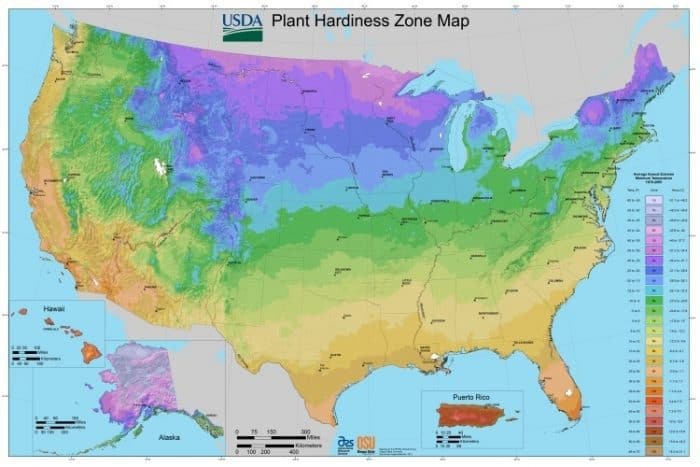
This means that the plant will be able to survive the winter with the temperatures that fall in its hardiness zone.
For example, if you have a plant that is suitable for a hardiness zone of 6 it will survive the winter where temperatures drop to minus 10 degrees Fahrenheit. A plant with a hardiness zone of 9 would not be able to survive this temperature and would die.
The hardiness zone of plants is mentioned on the seed packets that you buy unless those plants are annuals which means they grow from seed, flower, give fruit, and then die in winter.
Planting as per the microclimate
Even in a particular hardiness zone, there can be climate changes based on the location where you plant your vegetables.
If you plant your vegetables in the shade of a wall or a fence the temperature will be lower than if you plant them in full sunlight.
If you plant the vegetables indoors, on driveways, or sidewalks they can remain warmer even at night because such places absorb heat during the day and radiate it at night.
So you can choose the vegetables that you plant and when you want to plant them based on the location suitable for them.
When to plant warm-season vegetables
Warm season vegetables like to get a lot of sunlight to grow and produce a good harvest.
These vegetables are ones where the fruit is consumed rather than the stem, leaves, or buds.
The best time to plant warm season vegetables is in spring or early summer when the temperatures are warm enough. You should check the average date of the frost in your region and plant such vegetables two weeks after that.
You can extend the harvest of warm season vegetables till fall by using equipment like row covers. You can even start growing these warm-season vegetables indoors before spring so they get a jump start on their harvest as summer arrives.
Just make sure that you introduce them slowly to the outdoor warm weather and don’t place them in full sunlight at the beginning.
Some warm season vegetables you can plant include tomatoes, corn, beans, cucumber, squash, peppers, sweet potatoes, and okra.
When to plant cool season vegetables
Cool season vegetables thrive when the weather is cold and temperature ranges between 40 to 75 degrees Fahrenheit.
These vegetables are ones that provide edible stems, leaves, and buds rather than fruit. They are also smaller in size when compared to warm season vegetables.
The best time to plant such vegetables is in early spring just before the frost has almost gone away.
You will only be able to harvest them before the warm summer begins. However, you can continue enjoying them if the night temperatures are still cool. Or you can take them indoors and place them in a cool environment.
Some cool-season vegetables include potatoes, broccoli, kale, and spinach.
Done planting your vegetable garden? Here’s how to maintain it
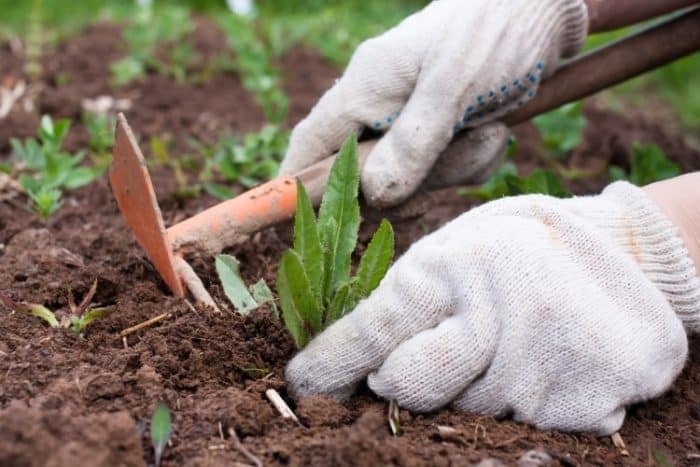
You’ve planted vegetables in your garden and they seem to be growing fine.
You don’t need to worry a lot about tending to vegetable plants. But that does not mean you should neglect them.
There are a few things you need to take care of to maintain your vegetable garden so that the plants are healthy and keep giving you a delicious harvest for years to come.
Supporting your plants
Some plants tend to grow tall and wide and need some support to help them thrive.
The best you can do is to plant some stake or trellis that can assist such plants. You need to do this work before the plant starts growing because otherwise you run the risk of damaging the roots.
Such supports will help give you more gardening space. It will also make sure there is good air circulation for the plants as well as good light exposure. And it’s a lot easier to harvest the vegetables from such support.
Watering your plants
One of the most important nutrient your vegetable plants need is water.
You should make sure to water them often especially if you observe that the soil is not moist enough. This roughly means you need to water your plants about 1 inch every week in total.
If you don’t water your plants they will tend to dry up and this is especially bad for vegetable plants like tomatoes that produce fruit. If you let the soil dry out and then put in a lot of water, the tomatoes may even crack up due to the heavy dose of water. And if there is too much water it will damage the roots of the plants causing them to rot.
You can’t rely on rainfall to water your plants because it can be so unpredictable. Instead, invest in a good drip irrigation system that will provide water directly to the roots without wasting it. They are not that expensive and worth every penny based on the effort they save you.
If you don’t have the funds then at least consider planting your vegetables near an accessible water source so that you are often reminded to water the plants and don’t need to put a lot of effort fetching the water.
Fertilizing
It’s always nice to have a garden bed that is full of rich organic matter that vegetable plants enjoy growing in.
Every year you need to make sure to add more organic matter like compost and keep enriching the soil for better yields. You may even add some a few times during the growing season.
But it takes time to make your soil rich with organic matter as it breaks down slowly and creates a healthy ecosystem.
You can consider using some good organic fertilizer that can help supplement the soil with the nutrients that it lacks. This could be some water-soluble fertilizer but you should make sure to water your garden well before you use it.
Mulching
Mulching is a technique where you cover the garden bed with a thick layer of material that still allows air and moisture to the plants and their roots.
Something like straw, hay, grass clippings,or bark works well as an organic mulch. This will protect your garden bed from weeds because they smother them and don’t allow the weeds to grow.
Mulching also helps keeps the plant roots cool and avoid extreme temperature fluctuations the plants may face. It also helps keep the moisture in the soil longer and prevents the soil from getting dry.
Predatory insects like spiders like to move around in such mulch and they will keep pests away from your vegetable plants.
And once the mulch has done its job and starts decomposing you can turn it into the soil and provide it with rich organic matter.
Removing weeds from your garden
Weeds can be a real pain because they eat up essential nutrients and water you provide to your vegetable plants.
The best way to start is to remove the weeds from the garden bed before planting the vegetables.
Then every few days you should check your garden bed for any weeds and take them out.
One solution to the weed problem is to use a good quality mulch that suffocates the weeds and prevents them from growing.
Using cover plants to protect your garden
Winter can be quite harsh to your vegetable garden. It can end up eroding the soil and draining its nutrients.
To avoid this, you can make use of something known as green manure or using a cover crop.
You just need to grow some plants in the fall season so that they protect the soil during the winter. When spring arrives, you can turn these plants into the soil where they will decompose into rich organic matter.
Some cover plants will also add nutrients like nitrogen to the soil and enrich it further for growing your vegetable plants starting spring.
Thinning plants in your garden
Once your plants have grown a couple of inches from the seeds you need to check that they have enough growing space.
If the plants are growing around one another then they will be fighting for nutrients and water and their growth will suffer.
So when you see such crowding especially in seedlings you can take some of them out and allow enough space between the plants for them to grow. This is known as thinning the plants.
You can also trim some of the foliage from plants especially root vegetables. This will help the plant provide most of the nutrients to the roots instead of to the leaves and branches. And you will end up with a healthy abundant harvest.
Time to harvest vegetables from your garden
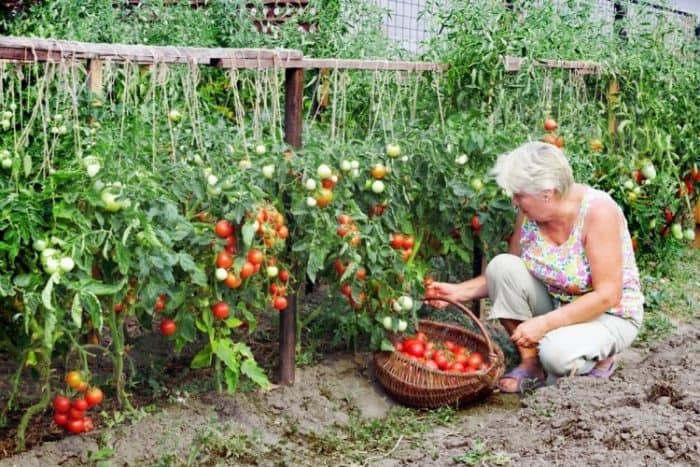
You’ve done all the hard work of planting a vegetable garden and taking care of the plants till they are mature.
Now it’s time to harvest the fruits of your labor and enjoy them immediately or store them for later consumption.
Know the right time to harvest
It’s important to harvest the vegetables at the right time which can vary based on the vegetables.
Picking vegetables at the right time means you will get the maximum flavor and nutrition from them.
It’s not always the case that you harvest vegetables when they are fully ripe and biggest in size.
Some vegetables like tomatoes can be harvested when they are ripe or even before they are ripe. You can then place them on a window sill till they ripen enough. Other vegetables like squash need you to be patient till they are ripe enough to harvest.
So make sure to take a walk through your vegetable garden every day to check if there is something to harvest.
Don’t damage the plants when harvesting
You’ve grown the vegetable plants with tender loving care and you don’t want to harm them while harvesting.
If you tear the vegetable from the plant or damage the stem there is a good chance that disease may spread through the wound.
So if the vegetable is not easy to separate from the plant then make use of a knife or a pruning shear to gently cut it without damaging the plant.
Don’t harvest vegetables when they are soaked after the rain but wait till they are dry because moisture seeping through cuts can cause disease.
Cut off vegetables that are damaged
It can happen that you lost track of some of the plants and they have started to wither. Or the vegetables growing on them have started to rot.
It’s best to cut away such rotting parts or fruits on the plant because you are not going to use that anyways. And it is beneficial to the plant because it does not have to spend energy on useless growth and can focus on growing healthy foliage.
Tips for harvesting some common vegetables
Tomatoes
Tomatoes are one of the easiest plants to grow and harvest. You can grow different versions of tomatoes that are big or small. They can also be different colors like red, pink, yellow, or green.
Larger tomatoes will take more time to ripen than smaller ones so keep checking your plants periodically for harvest time. A tomato that is easy to harvest comes off easily from the stem without applying a lot of force.
Even if you do pluck the tomatoes a little before they are ripe you don’t have to worry because they ripen when kept indoors as well. However, you will get the best flavor and nutrition when you pick them in their naturally ripened state.
There are some tomato plants that will produce fruit for a season and then die while other tomato plants will produce fruit in a season and then slow down in winter then start producing again next growing season. So be sure to harvest the tomatoes before they are affected by the cold weather.
Green beans
Green beans are available in several versions that can grow to different lengths. So you will need to get a feel for when they are ready for harvest.
The best time to harvest such green beans is when they have almost reached maturity but not quite. That is the time when they are tender and the seeds are not popping out of the pods.
If you let them mature a bit more they tend to get tough and the seeds become a lot harder.
The best time to pick such green beans is after the dew has dried out because moisture can increase the chances of disease entering the plant through the cut wounds.
Peas
Peas are similar to green beans that you need to pick them when they are tender and the peas are small. When they reach maturity, the peas tend to get hard and so do the pods.
The best way to know the state of the peas is to open a few pods and check the level of the peas inside.
Cucumber
There are several versions of the cucumber that you can grow.
Check the seed packets to know the size of the cucumber at harvest time as well as the time it takes for the cucumber to reach maturity.
You can pick cucumbers at different stages of their growth depending on how you are going to eat them.
If you enjoy tender cucumbers that have a thin skin and few seeds you can harvest them when they are young. If you enjoy snacking on woody cucumbers you should wait till they reach full maturity.
When harvesting, don’t snap the cucumbers from the vine but cut them out with the help of a knife. That will help avoid creating a wound that takes longer to heal and risks spreading disease in the plant.
Watermelon
Watermelon can be a bit hard to judge when it comes to harvesting. You can check the base of the watermelon to see if it is turning yellowish. You can also push your nail into the skin to see if it is getting tough.
A fully ripe watermelon will make a hollow sound when you thump on it with your hand. But the best way to check if a watermelon is ripe is to cut it open.
Muskmelon
Muskmelon is similar to a watermelon when it comes to judging for ripeness.
A fully ripe muskmelon will make a hollow sound when you thump on it with your hand. It will also show a yellowish color on the base where it connects to the stem.
The best way to harvest the muskmelon is to use a knife or pruning shear to cut it off the stem. This will help avoid a nasty cut wound that risks transmitting a disease to the plant.
Peppers
Peppers can be easy to gauge when you want to harvest them.
Once they reach a certain size and are still green you can harvest them if you like your peppers crisp in texture. If you want them a bit softer you can wait till the pepper changes color to yellow, red, or brown depending on the variety you have planted.
A hot pepper will change color from green to yellow, red, or brown the hotter it gets. So you need to decide when you want to harvest them based on how you intend to use them.
Root vegetables
You need to periodically check the root vegetables like carrot, radish, turnip to know when you can harvest them.
Once they start popping out of the soil they tend to be ready for harvest. If you like your root vegetables tender then it’s best to pick them young. If you like them more woody and pungent then you can wait a bit longer as they mature.
The good thing about root vegetables is that you can store them for a long time even if you harvest them early. You could even consider allowing them to remain unpicked under a snow blanket in winter and picking them as needed.
Herbs
Herbs are one of the easiest plants to harvest because you will be picking the leaves and stem.
The more you pick such edible parts of these plants the more growth they tend to get. This means you may end up with a surplus of such herbs.
But that is a good problem to have because you can dry the herbs and store them away for use in soups, pasta, and meat preparations.
Just make sure to pick these herbs before they start blooming because that can dull the flavor.
Lettuce
Lettuce is a vegetable plant that prefers a cool climate. So you have to harvest the leaves before the hot season.
The moment it is summer these plants will develop a flower stalk that makes the leaves bitter.
The good thing is you just need to cut the tender leaves with a pair of scissors when they are a few inches long. Do this every few days and you will find that the leaves keep growing giving you a continuous harvest till it is too hot to handle for the plant.
You can even consider placing the plants under a row cover or cloth to keep them cool and producing for a longer time. And you can plant seeds in late summer so that the plants can start growing in the cool fall weather.
Protecting your plants from pests and disease
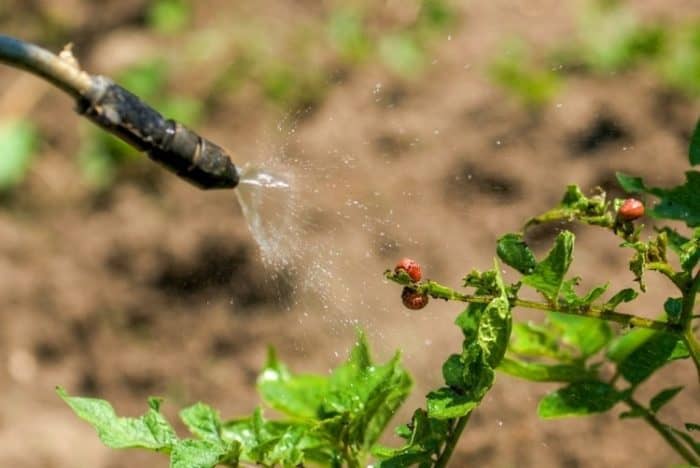
You’ve done all the hard work and got a thriving vegetable garden.
But you’ve been observing a few holes in your cabbage leaves lately. And your tomato plants don’t seem to be doing as well either.
What could be wrong?
You might be under the attack of pests and diseases that are damaging those plants and your efforts.
But don’t worry because there are ways to prevent, manage, and even overcome such pests and diseases without too much of impact on your garden.
How to prevent pests and diseases
The best thing you can do when it comes to pests and diseases is to prevent their occurrence in the first place.
Make sure your soil is fertile
Having a fertile soil is not only good for the growth of your vegetables but also for the health of your plants.
As humans, we need to have the right nutrition and rest so that we don’t suffer from disease. And the same holds for plants as well so make sure that you give your plants plenty of organic material that is rich in nutrients.
One of the ways is to enrich the soil with a good compost that is organically rich. However, do remember that it may take a few years to build a fertile garden so you should start as soon as possible.
Encourage biodiversity in your garden
It’s always good to have a garden that is thriving with the right organisms that enhance the biodiversity of the garden.
This means you should encourage the variety of birds, insects, microorganisms, and plants that will enrich the environment and protect your vegetable garden.
Birds enjoy feeding on pests as well as help pollinate your plants so you should encourage their arrival. The same can be said of predatory insects that will clean up your garden of pests and diseases.
The essential microorganisms and worms in the soil will help enrich it with organic matter that is helpful to grow healthy plants and prevent disease from occurring.
Make sure the hygiene of your garden is good
Diseases can easily spread in your garden if you don’t keep it clean and tidy.
So ensure that you clean the garden especially of dried up leaves and plants that are already infected. Do not allow such things to decompose in your garden or your compost pile as this will encourage the spread of the disease.
Rather take the infected plants and leaves and dispose them by burning them up.
Another carrier of disease are the animals that may tread upon your garden so try to prevent them from entering by building up fences and using crop covers.
Buy good seeds and plants
Disease can easily transmit if they are already present in the seeds that you buy. So make sure to check that the seeds are free from diseases.
You may be able to get a variety of the seeds that are already protected from several diseases so try to buy those.
The same can be said of the plants you buy for transplanting. Make sure that the plants you get from the nursery are free from pests and diseases so that they don’t enter into your garden.
You might be able to get a variety of the plant that is already resistant to diseases so choose those when available.
Right place for the plant
The plants that you grow should be based on the climate and soil that is most suitable for them.
If you live in a cold climate environment but plant warm-season plants there is a chance that they might not grow well and even if they do they can be affected by disease.
So you should choose the plants that are best suited for your environment as they will thrive and be disease free. You could also consider growing plants in a controlled environment where you give them the right temperature and soil to avoid any problems.
Plenty of space
One of the easiest things you can do to protect your plants from pests and disease is to give them plenty of space to grow.
When you crowd up your plants, they have to compete for the nutrients in the soil. With the thick foliage, there will not be a good supply of water and sunlight to the plants as well.
And such foliage will prevent the healthy circulation of air through the leaves and the stem. This causes moisture to build up that is an invitation to fungal infections and bacteria.
So make sure that when you plant the seeds or saplings there is a good amount of space between the plants based on the recommendations.
Use crop rotation and intercropping
There are pests and insects that affect one type of vegetable plant but not others. You can use this to your advantage by crop rotation.
This means that every few years you can change the type of crops you are planting in your vegetable garden. Any pests and disease that was affecting your plants will die because they no longer can feed on those plants.
You do need to ensure that the new set of plants are not of the same type as the earlier ones so that the existing pests and diseases cannot affect them.
How to manage the pests and disease
You may have done all that could to prevent the spread of pests and disease in your vegetable garden. But there are times when some plants will get infected.
You need to check your vegetable plants often to notice any changes that may signal such an infestation. The sooner you can detect problems in your plants the faster and easier it will be to manage the problem.
Using a mechanical control
There are several types of netting that you can use to prevent the pests and insects from reaching your plants. You can get things like a crop cover, biocover, bird netting based on the protection you need to provide.
Just be careful of the type of cover you use because one that might work for a particular type of pest might not work for another type.
Plants of the brassica family like cabbage, lettuce, broccoli have the problem that root flies lay their eggs on the roots and damage the plants. The best way to prevent these pests is to add a collar to the stem of the cabbage and prevent the flies from laying their eggs.
Some of the pests like slugs can be trapped using a beer trap where you place containers with beer in your garden. They enjoy the beer but tend to drown in them. If you have a problem with aphids you can consider using yellow tape that traps them and lowers their population though it will not eliminate them completely.
One of the most effective ways to control large pests is to pick them by hand and dispose of them. This method works great for pests like slugs, snails, and caterpillars.
Using a biological control
One of the safest ways to get rid of pests is to introduce insects that will eat them up. You can grow plants that attract these insects or you can consider buying them from the store. Do note that buying such insects can be a bit expensive.
You can also grow plants that attract birds that eat up a lot of these pets and will help pollinate your plants at the same time.
Using a chemical control

You need to be careful when using chemicals in your vegetable garden. It’s good to make use of an organic chemical spray to take care of pest in your garden. But even if it is organic you can end up killing beneficial insects as well.
So use a chemical control as a last measure of defense against pests and disease.
Fungicides are effective against fungal infections but you need to apply them before the infections occur or just as it has occurred. And you will need to apply it a few times for it to take effect.
Fungicides are not useful against viruses, bacteria, and nematodes. You will then need a pesticide.
When using an insecticide prefer a low-toxic one such as neem oil, insecticidal soap, or horticultural oil because it will be the least harmful to beneficial insects.
How to rotate vegetable plants for a successful garden
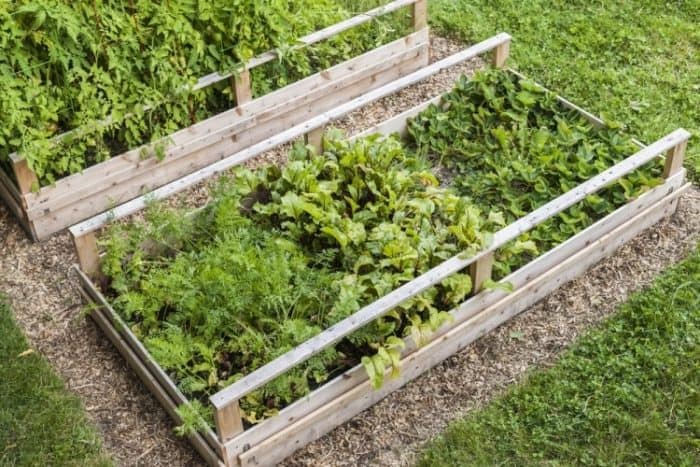
A healthy garden will give you years of produce with relatively low maintenance. One of the best things you can do is rotate the plants to keep the soil fertile and the plants free from disease.
To rotate vegetable plants means that every few years you will replace the plants with a different family of plants. So for example, if you have a bed of tomato plants, after three years, you can replace them with a bed of green beans.
This can improve your soil fertility because tomato plants require a lot of nitrogen and will deplete your soil of it. When you plant green beans they will replenish the soil with nitrogen but do need a lot of phosphorus. So after a few years, you can replace the green beans with a root vegetable like carrots.
This type of crop rotation also helps in getting rid of some pests and diseases. Suppose your tomato plant is suffering from a specific bacteria that affects the roots of tomato plants. If you replace the plants with green beans after a few years, the bacteria can no longer survive and will die out.
The same can happen to insects that love a particular type of plant. By replacing those plants, the insects have nothing to feed on and will die. So your garden will be free from such pests and diseases.
What is the best way to rotate vegetable crops?
A particular family of vegetables will suffer from the same type of pests and diseases.
This means that after about three years you should not grow plants of the same vegetable family in the same garden spot.
A very simple method of rotation is to move from heavy feeding vegetables to enriching vegetables to root vegetables.
Heavy feeding vegetables are the ones with leaves and fruit such as tomatoes, cucumbers, lettuce, and cabbage. So you can grow them in an area of your garden. These vegetables consume a lot of nitrogen from the soil.

After a few years replace them with enriching vegetables like green beans and peas that will fix nitrogen into the soil thus bringing the fertility back but consuming a lot of phosphorus.
And after a few years, you can replace them with light feeding vegetables that are root and herb plants like carrots, radishes, and basil.
You can keep repeating this cycle of replacing plants every few years and reap the benefits of crop rotation.
What are some essential vegetable gardening tools?

The most important things a vegetable garden needs are seeds, air, sun, soil, and water. As long as you can plant the seeds and water them, you will get a good harvest.
But gardening can be hard work and a good set of gardening tools will make your life that much easier.
Tiller
A tiller is a tool that will help you turn the soil and make it loose. This is useful in case you have very compact soil and want to loosen it.
This helps turn the sod, dry leaves, and organic matter into the soil and make it an optimal growing place for plants. The loosened soil will help air and water circulate helping the plants roots as well as essential organisms in the soil to thrive.
There are different types of tillers available so choose one based on your strength and the soil’s condition.
Spade
A spade can help you turn the soil in a small garden as well as dig up weeds. It can also help you add soil and compost to your garden.
There are different sizes and shapes of spades available and you can choose one based on your strength and preference.
Rake
A rake is a handy tool that can be used to break up clumps of soil as well as to even out the garden bed.
Once your vegetable garden is ready for planting you can use the teeth of the rake to create furrows in which you can place the seeds or the plants.
They are also useful to remove dry leaves and unwanted debris from your garden.
Garden seeder
A garden seeder is a useful tool for the effective and efficient planting of seeds.
It helps plant seeds at the right intervals so they come out of the ground even and at the same time. It also helps reduce the discomfort of bending or kneeling to plant the seeds.
Irrigation system
If you have a small vegetable garden or are using containers, then a simple watering can should be sufficient for your irrigation needs.
However, if your garden is large it can become tiring to use a watering can and you should invest in a good irrigation system.
If you like to water your garden then a hose with an adjustable nozzle is good because it allows you to control the water pressure for seeds, small plants, as well as full-grown plants.
If you don’t want to spend a lot of time watering you can consider a sprinkler system that will water the roots precisely without you having to do much work.
Pruner
One of the must have tools in every gardener’s toolbox is a pair of pruners. These will help you prune your plants so that they grow better. They can be used to cut away dead or diseased branches and plants. And they are useful to harvest the vegetables without damaging the plants.
A bypass pruner works like a scissor and helps you make precise cuts. This is the one you must have to prune green plants as well as harvest vegetables.
To cut dead wood you can use anvil pruner but risk damaging them. Instead, you can choose an anvil pruner that works like a knife cutting on a chopping board. It helps cut hardwood without much effort.
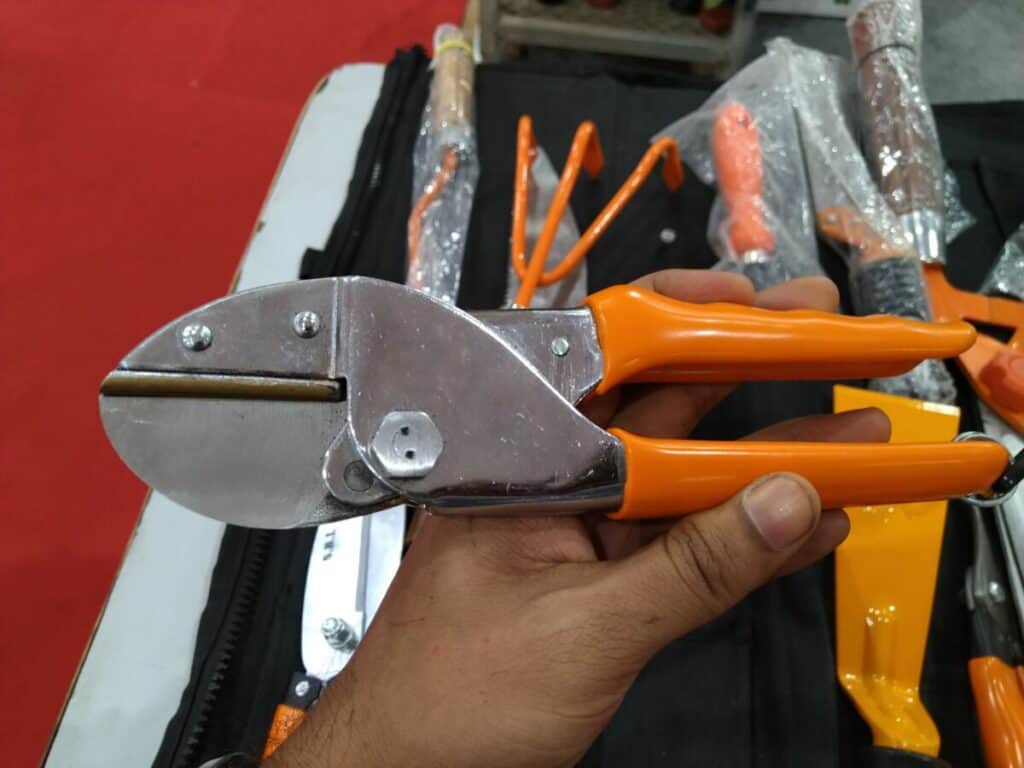
Hoe
A garden hoe can be a multipurpose tool in your vegetable garden. It can help you raise the beds by moving soil from the sides.
You can also use it to dig up weeds as well as carry dirt to short distances. And you can use it to create trenches as well as hills that some plants may need.
Wheelbarrow
You are going to have to move around a lot of soil when creating a vegetable garden, especially with a raised bed.
A new garden means adding potting soil, compost, and fertilizer to your garden. And lifting heavy bags in hot weather is not a pleasant task.
Instead, invest in a good wheelbarrow that will help you move such material to and from your garden and prevent you getting fatigued.
Compost bin
A compost bin is where you can put all your food waste, dry leaves, pruned branches and have rich organic matter in a few months.
You can make use of a compost tumbler that speeds up the process and the material is ready in a few weeks.
Either buy a compost bin or make one from a used up trash can or a barrel.
Trellis
There are some vegetable plants that need support to grow vertically and need the use of a trellis. This will help prevent those plants from taking the entire garden space.
It will also help vegetables like tomatoes, cucumbers, peas, and beans to stay off the ground and avoid being infected with disease.
There are several types of trellises available made of wood, metal, or wire. You can choose one based on your preference as well as the climate in your garden.
Gloves
You’ll be spending a lot of time in the garden tending to your plants. This means you can get thorn-pricks or splinters in your hands.
So make sure to invest in a good pair of gardening gloves that are durable as well as comfortable to use.
It’s useful to have a pair when you want to manually take out insects from your garden but are squeamish to touch them.
What are some good apps to start your vegetable garden?
You can find several gardening apps for Android and iOS devices that can help you plan a vegetable garden and plant the right vegetables for it. Let’s take a look at a few that are quite useful.
Garden Planner
The Garden Planner app will help you create a unique garden based on your needs. You can draw your vegetable beds and add the plants you intend to grow to them.
This app uses your GPS information and with the help of over 5000 weather stations it will be customized specifically for your location. This means it will give you accurate information on the type of plants you can grow and when to grow them.
The app provides you with a lot of videos and information guides on the vegetables that you intend to grow.
It even gives you a plant rotation warning based on the plants you’ve previously grown in a particular area of your garden.
Every couple of weeks you can get a reminder of what you need to plant based on your gardening plants.
You also get access to a large gardening community that can help you with any questions that you may have.
Homegrown with Bonnie Plants
https://www.youtube.com/watch?v=MxaF8h2Ifd8
The Homegrown with Bonnie Plants is another useful app that will help you while planning out your vegetable garden as well as when you are actually growing your vegetable plants.
The app provides weather information for 5 days that will help you decide what precautions you need to take when planting new vegetables or taking care of existing ones in your garden.
The app provides information about more than 250 vegetables and herbs that you can grow in your garden. This includes details about the plants, how to grow and harvest them, and the problems you might face while growing them.
There is also a tomato or pepper choosing guide that will help you choose precisely which tomatoes or peppers you can grow in your vegetable garden.
You have several informational guides that you can use to start your vegetable garden even if you’re a beginner.
The notes section of the app is useful to take notes during your gardening. It easy to record information with text, images, and audio. You can also convert notes into tasks that you need to do and set a reminder for them.
It’s time to grow your vegetable garden
Imagine getting to eat your favorite vegetables when they are fresh.
Imagine eating vegetables that are free from any harmful pesticides.
And imagine eating them when they are the most nutritious and best in taste.
Now you should be able to plant your own vegetable garden and get all of these benefits without spending a lot of time and effort.
So get out there and start growing your own vegetables.
And make the world a greener place.

Fact Checked, Written, and Published by Kevin Rodrigues
Kevin is the founder of Gardening Mentor, a website that aims to teach people to grow their own food in a limited space. As a self-taught gardener, Kevin has spent several years growing plants and creating gardening content on the website. He is certified in Home Horticulture and Organic Gardening from Oregon State University. He has a Post Graduate Diploma in Horticulture and Landscape Gardening from Mumbai University.
Read more
